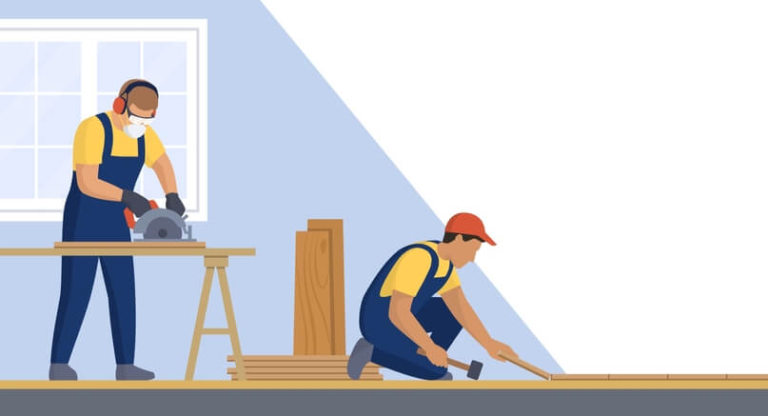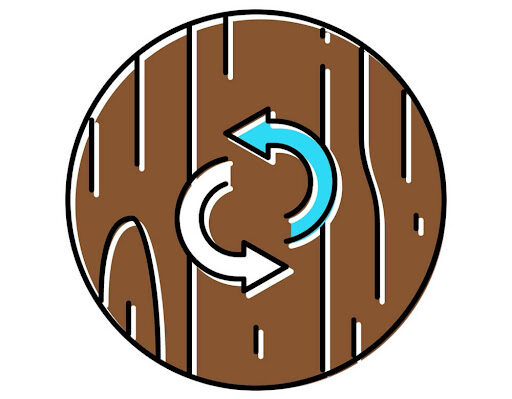
The choice of flooring and baseboards is a crucial decision in interior design, impacting the overall aesthetics of a space. When it comes to hardwood floors and baseboards, one common question arises: Do hardwood floors need to match baseboards?
No, hardwood floors don’t need to match baseboards. Matching creates unity, while contrasting adds interest. Consider room size, layout, and personal style. Choose based on aesthetics and individual preferences. There’s no strict rule, allowing flexibility in design to achieve a look that suits your taste and complements your space.
Being hardwood flooring experts, we help homeowners design their homes according to trends and personal preferences. In this article, we’ll explore the considerations and factors involved in making this decision of matching wooden floors with baseboards or not.
Do Hardwood Floors Need to Match Baseboards?
Hardwood floors add timeless elegance and warmth to any home. But when it comes to pairing them with baseboards, the question arises: do they need to match? The answer, like most things in design, is not a simple yes or no. It depends on several factors and ultimately boils down to your personal taste and desired aesthetic. Perfectly matched colors of trim, baseboards, and hardwood floors increase home value. Let’s have a look at both matching and contrasting hardwood floors and baseboards:
Benefits of Matching Hardwood Floors & Baseboards
Unified Aesthetics
Matching hardwood floors and baseboards creates a sense of unity and continuity throughout a room. This design choice is often preferred in traditional and classic interiors, where a cohesive look is desirable.
Illusion of Space
A seamless transition between hardwood floors and baseboards can visually expand a room, making it appear larger and more open. This effect is particularly advantageous in smaller spaces where the goal is to maximize the perception of roominess.
Elegant Simplicity
A matching hardwood and baseboard combination exudes an understated elegance. This design choice allows other elements in the room, such as furniture and decor, to take center stage without distraction.
Drawbacks of Matching
- Can be monotonous and lack visual interest.
- Can be difficult to achieve a perfect match, especially with natural wood variations.
- May not be the best choice for modern or contemporary styles.
Benefits of Contrasting Hardwood Floors & Baseboards
These benefits will help you learn the right way of designing and installing baseboards with their colors matching and contrast with hardwood floors.
Visual Interest
Opting for contrasting hardwood floors and baseboards can introduce visual interest and break up the monotony of a single color scheme. This approach is popular in contemporary and eclectic designs, adding a layer of complexity to the overall aesthetic.
Highlighting Details
Contrasting baseboards can draw attention to architectural details and molding, showcasing these features as design elements. This is particularly effective in rooms with intricate trim work or distinctive architectural characteristics.
Bold Statements
Contrasting colors create a bolder, more dynamic look, and can produce different hardwood floor design ideas. It allows homeowners to make a statement with their design choices, expressing individuality and personal style. This is especially relevant in modern and eclectic interior designs.
Drawbacks of Mixing and Matching
- Requires careful planning and consideration to avoid clashing colors or styles.
- May not be suitable for all types of hardwood floors or baseboards.
- Can be a riskier choice for those unsure of their design skills.
Factors To Consider While Making Decisions
Room Size and Layout
The size and layout of the room play a crucial role in determining whether to match or contrast hardwood floors and baseboards. Hardwood floors are laid differently in different rooms. In smaller rooms, a matching design may be more suitable, while larger spaces can accommodate the drama of a contrasting combination.
Architectural Features
The architectural features of the space, such as crown molding, window casings, and door frames, should be considered when making this decision. A contrasting design can highlight these features, enhancing the overall aesthetic.
Personal Style and Preference
Ultimately, personal style and preference should guide the decision. Homeowners should choose a design that resonates with their taste and complements the overall theme of their home.
Remember, there are no hard and fast rules when it comes to design. Whether you choose to match or mix and match your hardwood floors and baseboards, the key is to create a space that feels cohesive and reflects your personal style. So, get creative, have fun, and don’t be afraid to experiment!
Bonus Tip: If you’re feeling overwhelmed by the options, consider seeking help from a professional interior designer. They can guide you through the process and ensure you achieve a stunning and cohesive look in your home.
FAQs
Should Your Wood Floors Match Your Wood Trim?
Ideally, yes. Matching wood floors with trim creates visual continuity, providing a cohesive and elegant look. This design choice is often preferred in traditional and classic interiors, fostering a sense of unity throughout the space.
Should Your Quarter Round Match The Floor Or Baseboard?
Generally, it’s advisable for the quarter round to match the baseboard. This creates a seamless transition, contributing to a polished appearance. However, in some designs, matching it with the floor can be considered for a subtle, understated effect.
Should Baseboard Color Match Walls Or Floor?
Baseboard color should typically match the trim or the walls. This helps maintain a unified appearance and avoids distractions. However, in modern or eclectic designs, contrasting baseboard colors may be used strategically to add visual interest.
Should Hardwood Floors Match Throughout The House?
While it’s not mandatory, matching hardwood floors throughout the house creates a cohesive flow, making spaces feel interconnected. Consistency in flooring promotes a harmonious design, enhancing the overall aesthetic and potentially increasing the perceived size of the living area.
Conclusion
The debate on whether hardwood floors need to match baseboards ultimately boils down to individual preferences, design goals, and the overall aesthetic desired for a space. Whether one opts for a harmonious, matching look or a contrasting, bold design, the key is to create a cohesive and visually appealing interior that reflects the homeowner’s unique style and vision.







